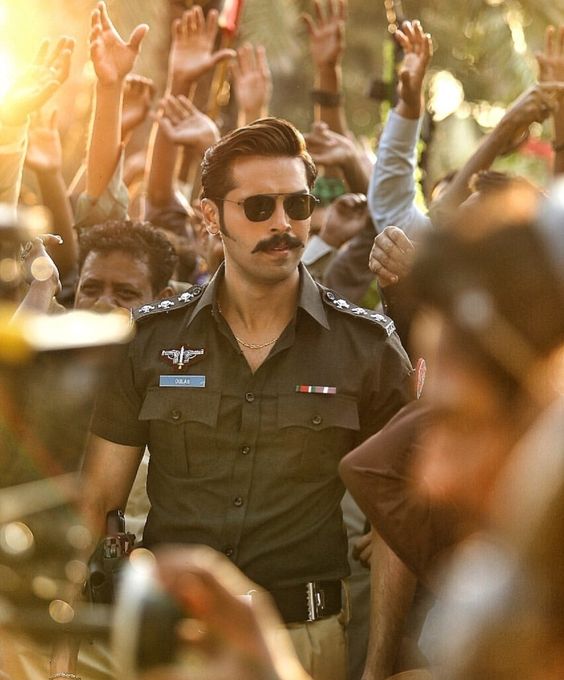Quaid-e-Azam Zindabad” is the most recent artistic undertaking including Pakistani whiz Fahad Mustafa. Coordinated by the acclaimed Nabeel Qureshi and delivered by Fizza Ali Meerza under the pennant of Filmwala Pictures, this activity parody film blends diversion with a significant social message. The title, which means “Long Live Quaid-e-Azam,” honors Pakistan’s initial architect, Muhammad Ali Jinnah, and the qualities he represented. The title is likewise emblematically critical, as it considers the country’s socio-political scene and the regard held for Jinnah’s inheritance.
Director and Production Team
Nabeel Qureshi has secured himself as quite possibly one of the most persuasive movie producer in Pakistan, known for his sharp friendly analysis enclosed by connecting with accounts. His past works, like Na Maloom Afraad and Entertainer in Regulation, have been both widely praised and monetarily fruitful. Yet again teaming up with Fizza Ali Meerza, a force to be reckoned with in Pakistani film creation, Qureshi has made a film that is supposed to reverberate with crowds on numerous levels.
The pair’s capacity to blend humor with hard-hitting subjects is a sign of their filmmaking style, and Quaid-e-Azam Zindabad proceeds with this custom. The creation values are first class, with tender loving care in all that from set plan to the movement of activity groupings. The film was shot across different areas in Pakistan, catching the substance of the country’s assorted scenes and metropolitan settings.

Plot and Characters
Nabeel Qureshi has secured himself as quite possibly one of the most powerful producer in Pakistan, known for his sharp friendly discourse enclosed by drawing in stories. His past works, like Na Maloom Afraad and Entertainer in Regulation, have been both widely praised and economically fruitful. Once more teaming up with Fizza Ali Meerza, a force to be reckoned with in Pakistani film creation, Qureshi has made a film that is supposed to resonate with crowds on various levels.
The team’s capacity to blend humor in with hard-hitting subjects is a sign of their filmmaking style, and Quaid-e-Azam Zindabad proceeds with this practice. The creation values are first class, with scrupulousness in all that from set plan to the movement of activity successions. The film was shot across various the core of Quaid-e-Azam Zindabad is the person Gulab, depicted by Fahad Mustafa. Gulab is a bad cop who utilizes his situation to gather abundance through pay-offs and other unlawful means. His reality, notwithstanding, starts to change when he meets Jia, played by Mahira Khan, a solid-willed lady who challenges his perspective.
The plot dives into Gulab’s inward and outside battles as he wrestles with his inner voice and the results of his activities. The story likewise consolidates a basic glance at foundational defilement in Pakistan, involving Gulab’s personality as a focal point to investigate more extensive cultural issues. The presence of Quaid-e-Azam, Muhammad Ali Jinnah, as a representative figure throughout the film, adds profundity to the story, especially through the common theme of his picture on the country’s cash notes.
The film’s exchanges are sharp and clever, with snapshots of thoughtfulness that permit the characters to naturally create. Fahad Mustafa’s depiction of Gulab is both charming and layered, catching the subtleties of a man who got between his desires and his ethical arousing. Mahira Khan’s Jia isn’t simply an adoration interest but a vital person who impacts Gulab’s transformation. locations in Pakistan, catching the quintessence of the country’s different scenes and metropolitan settings.

Themes and Symbolism
- Nabeel Qureshi has laid down a good foundation for himself as quite possibly one of the most powerful movie producer in Pakistan, known for his sharp friendly discourse enveloped by connecting with stories. His past works, like Na Maloom Afraad and Entertainer in Regulation, have been both widely praised and financially fruitful. Teaming up with Fizza Ali Meerza, a force to be reckoned with in Pakistani film creation, Qureshi has by and by made a film that is supposed to resound with crowds on various levels.
- The couple’s capacity to blend humor in with hard-hitting subjects is a sign of their filmmaking style, and Quaid-e-Azam Zindabad proceeds with this practice. The creation values are first rate, with scrupulousness in all that from set plan to the movement of activity successions. The film was shot across various the core of Quaid-e-Azam Zindabad is the person Gulab, depicted by Fahad Mustafa. Gulab is a bad cop who utilizes his situation to gather abundance through pay-offs and other unlawful means. His reality, nonetheless, starts to change when he meets Jia, played by Mahira Khan, a solid-willed lady who challenges his perspective.
- The plot dives into Gulab’s inward and outside battles as he graQuaid-e-Azam Zindabad is rich with subjects of nationalism, debasement, and reclamation. The film utilizes the picture of Quaid-e-Azam on money notes as a strong image. It requests the crowd to ponder the importance of Jinnah’s heritage in contemporary Pakistan and whether the country has satisfied the beliefs he imagined.
- One of the focal inquiries the film presents is: “Do you have any idea why Quaid-e-Azam’s image is on the cash takes note of?” This line, conveyed by Gulab, isn’t simply a non-serious inquiry but a test to the crowd to think about the worth of genuineness and respectability in their own lives.
- The film likewise resolves the unavoidable issue of debasement, a topic that reverberates profoundly in Pakistan. Through Gulab’s excursion, the film investigates the standardization of debasement and accentuates the significance of moral honesty. The story proposes that genuine nationalism lies not in void mottos but rather in satisfying the rules that Quaid-e-Azam stood for. with his heart and the results of his activities. The story likewise consolidates a basic gander at foundational defilement in Pakistan, involving Gulab’s personality as a focal point to investigate more extensive cultural issues. The presence of Quaid-e-Azam, Muhammad Ali Jinnah, as a representative figure throughout the film, adds profundity to the story, especially through the repetitive theme of his picture on the country’s money notes.
- The film’s exchanges are sharp and clever, with snapshots of thoughtfulness that permit the characters to naturally create. Fahad Mustafa’s depiction of Gulab is both charming and layered, catching the subtleties of a man who got between his desires and his ethical arousing. Mahira Khan’s Jia isn’t simply an affection interest but an urgent person who impacts Gulab’s transformation. locations in Pakistan, catching the substance of the country’s different scenes and metropolitan settings.
Cinematic Style and Direction
Nabeel Qureshi’s heading in Quaid-e-Azam Zindabad is set apart by his unique way of mixing humor with serious social analysis. The film’s pacing is energetic, with a blend of activity successions, emotional minutes, and lighter comedic scenes that keep the crowd locked in. The cinematography by Rana Kamran is dynamic, catching both the turbulent energy of metropolitan life and the intelligent snapshots of the characters.
The film’s activity successions are especially significant. They are arranged to mirror Gulab’s character — reckless, strong, and proud. These arrangements are about the actual battle as well as about Gulab’s inner fight with his soul.
The soundtrack, formed by Shani Arshad, supplements the film’s tone impeccably. The music goes from high-energy tracks that highlight the activity scenes to additional serious songs that feature the film’s profundity. The utilization of customary Pakistani music components additionally adds to the film’s social realness.
Reception and Impact
upon its delivery, Quaid-e-Azam Zindabad got a warm gathering from the two pundits and crowds. Fahad Mustafa and Mahira Khan’s exhibitions were broadly commended, especially for their science and the profundity they brought to their characters. The film’s blend of diversion and a strong message reverberated with watchers, making it an idea in Pakistan’s realistic scene.
Pundits have commended the film for its strong interpretation of defilement and its capacity to make the crowd snicker while additionally making them think. The film’s prosperity is likewise viewed as a demonstration of the developing development of Pakistani film, where producers are progressively ready to handle testing subjects in imaginative ways.
As far as film industry execution, Quaid-e-Azam Zindabad got along admirably, especially in metropolitan places where its topics of defilement and civil rights hit home for more youthful crowds. The film additionally profited from the star force of Fahad Mustafa and Mahira Khan, both of whom are among the most bankable entertainers in Pakistan.

Conclusion
Quaid-e-Azam Zindabad is something other than a film; it is a critique of contemporary Pakistani society and a source of inspiration for a re-visitation of the qualities that Quaid-e-Azam imagined for the country. From the perspective of a bad cop’s excursion to recovery, the film investigates complex subjects with humor, heart, and a portion of the real world. Coordinated by Nabeel Qureshi and fueled by areas of strength from Fahad Mustafa and Mahira Khan, the film remains a critical commitment to the developing story of Pakistani film.
As the film keeps on causing disturbances, it will probably move more conversations about the job of film in resolving cultural issues and the significance of protecting the beliefs of honesty and nationalism in a quickly impacting world.
